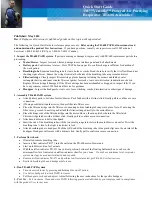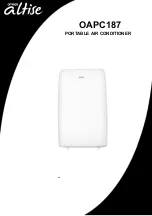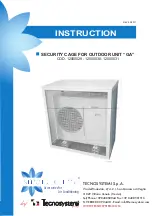
65
Refrigerant Piping System Installation for Heat Pump Operation
Due to our policy of continuous product innovation, some specifications may change without notification.
©LG Electronics U.S.A., Inc., Englewood Cliffs, NJ. All rights reserved. “LG” is a registered trademark of LG Corp.
Knock Outs
After the pipe route is chosen, installer must prepare the access holes in the front panel (front pipe route) or in the base pan at the bottom of
the outdoor unit (for left and right side pipe routes). The access holes for the communication cables and the power supply wiring can also be
knocked out at this time. See diagram at right for access hole locations.
• Do not damage the outdoor unit pipes or the base pan when knocking out the access holes.
• To avoid damaging the piping and power wiring / communication cables, remove any burrs that may have formed during the knock out
procedure. Make sure the access holes have smooth edges.
• To avoid damaging the power wiring / communication cables, install sleeves.
• After piping installation is complete, to prevent animals or foreign materials from damaging the outdoor unit cables / wiring, seal any holes in
with sealant, plugs, foam, caulk, putty, etc.
Avoid Pipe Damage
• When routing field-provided piping inside the outdoor unit frame, avoid causing vibration that will damage the components.
• Correctly route the piping so it does not make contact with the compressor casing, terminal cover, or mounting bolts. Allow room for field
installation.
• Properly install and insulate refrigerant pipes separately up to the service valve body inside the confines of the unit frame.
Knock Out for
Liquid Pipe
Knock Out (Not Used
for Heat Pump Systems)
Knock Out for
Vapor Pipe
Knock Out for
Communication Cables
Knock Out Area for Pipe Connections
Routed Through Bottom to Left or Right Side
Knock Out for
Power Supply Wiring
Heat Pump Outdoor Unit Knock Outs.
Knock Outs
INSTALLING FOR HEAT PUMP
OPERATION
















































